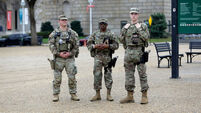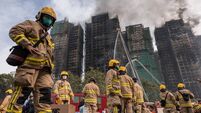Focus turns to growing humanitarian crisis following Myanmar quake
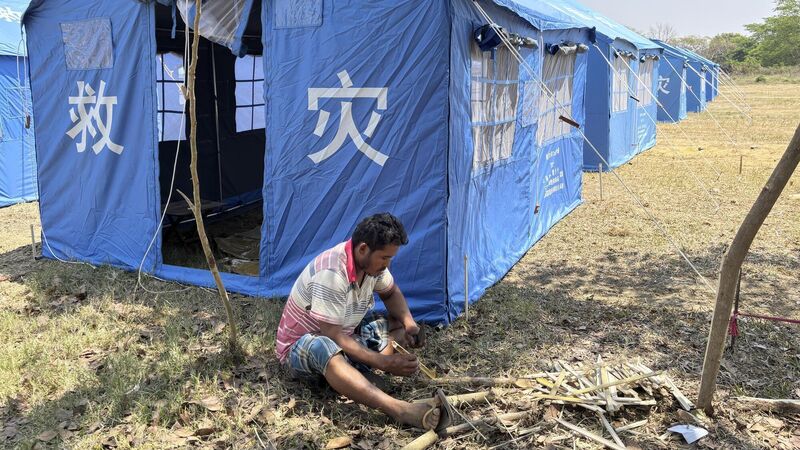
A man works at temporary shelter for displaced people, in the aftermath of the earthquake, in Naypyitaw. File picture: AP
Search teams have pulled more bodies from the ruins of buildings, a week after a massive earthquake rocked Myanmar, killing more than 3,100 people.
The focus is now turning towards urgent humanitarian needs in a country that was already devastated by civil war.
United Nations humanitarian chief Tom Fletcher, who is also the emergency relief coordinator, is arriving on Friday in a bid to spur action following the quake.
Ahead of his visit, UN Secretary-General Antonio Guterres appealed to the international community to immediately step up funding for quake victims “to match the scale of this crisis”, and he urged unimpeded access to reach those in need.
“The earthquake has supercharged the suffering with the monsoon season just around the corner,” he said on Thursday.
Myanmar authorities said 3,145 people had been killed, with another 4,589 people injured and 221 missing.
The UK, which had already given £9.9m to purchase emergency items like food, water and shelter, pledged an additional £4.9m in funds to match an appeal from Myanmar’s Disasters Emergency Committee, according to the UK Embassy in Yangon.
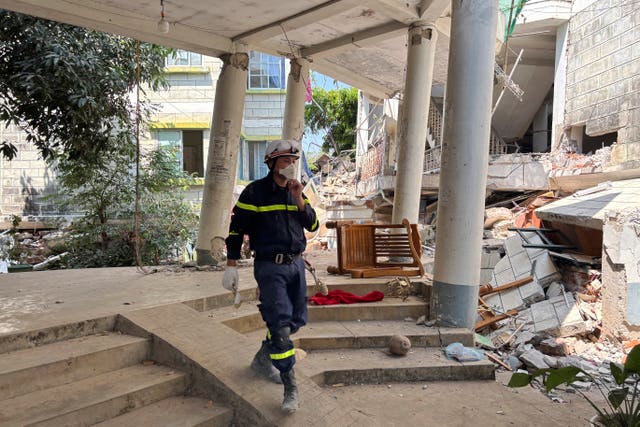
Many international search and rescue teams were also on the scene, and eight medical crews from China, Thailand, Japan, Bangladesh, Bhutan, the Philippines, Indonesia and Russia were operating in Naypyitaw, according to Myanmar’s military-run government.
Another five teams from India, Russia, Laos and Nepal and Singapore were helping in the Mandalay region, while teams from Russia, Malaysia and the Asean bloc of nations were assisting in the Sagaing region.
The Trump administration has pledged two million dollars (£1.52m) in emergency aid and sent a three-person team to assess how best to respond given drastic cuts to US foreign assistance.
On Friday, five bodies were recovered from the rubble in the capital Naypyitaw and the second-largest city of Mandalay, near the epicentre of the 7.7-magnitude earthquake on March 28, authorities said.
The last reported rescue came on Wednesday, some 125 hours after the quake struck, when a man was saved from the wreckage of a hotel in Mandalay.
The quake also shook neighbouring Thailand, bringing down a high-rise under construction in Bangkok, where recovery work continued on Friday.
Overall, 22 people have been found dead and 35 injured in Bangkok, primarily from the construction site.
Myanmar’s military seized power in 2021 from the democratically elected government of Aung San Suu Kyi, sparking what has turned into a civil war.
The quake worsened an already dire humanitarian crisis, with more than three million people displaced from their homes and nearly 20 million in need even before it hit, according to the United Nations.
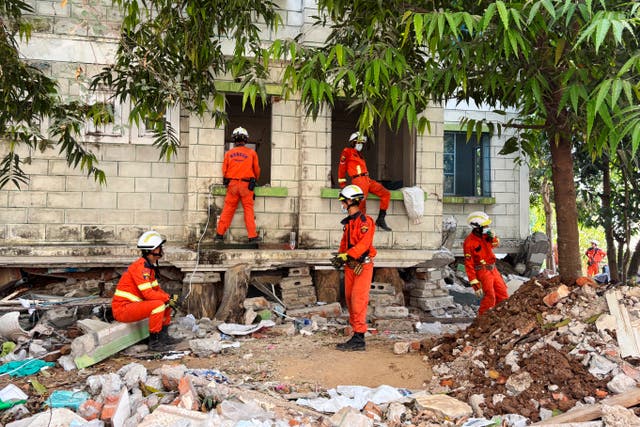
As concerns grew that ongoing fighting could hamper humanitarian aid efforts, the military declared a temporary ceasefire Wednesday, through until April 22. The announcement followed unilateral temporary ceasefires announced by armed resistance groups opposed to military rule.
On Thursday, however, there were renewed airstrikes in Kayah state, also known as Karenni, in eastern Myanmar, according to witnesses.
The military has said that it would still take “necessary” measures against resistance groups, if they use the ceasefire to regroup, train or launch attacks, and the groups have said they reserved the right to defend themselves.






